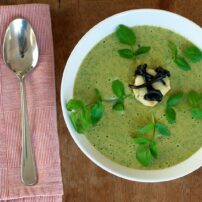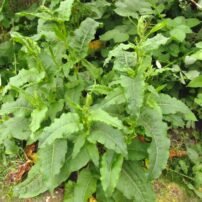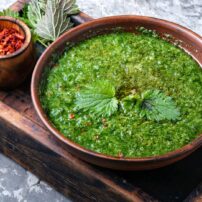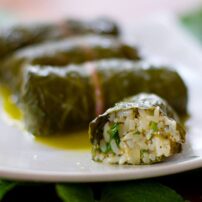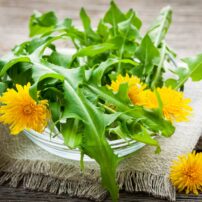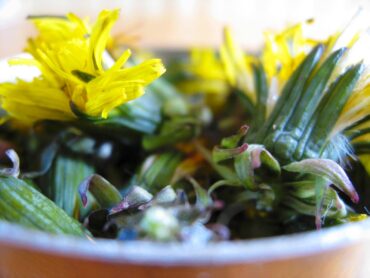
So, you find dandelions to be less than dandy, knotweed has you in knots, and you’ve lost your patience with purslane.
Some advice: If you can’t beat ’em, eat ’em. These plants and many other so-called “weeds” are actually tasty and good for you.
Numerous plants that people consider to be weeds are actually not. The textbook definition of a “weed” is a “plant in the wrong place.” But Seattle-based author Langdon Cook, who has led foraging classes on Bainbridge Island, will tell you that many so-called weeds are actually plants in the right place. Gardeners try to move them out to accommodate the perfect lawn or garden, but in doing so displace a veritable store outside their doors.
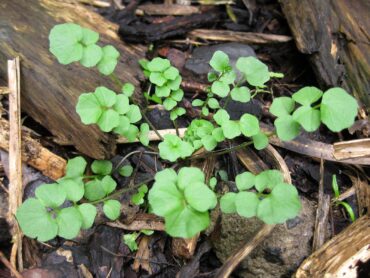
Cook says the “Victorian notion of the garden as anchor to the wind of godless wilderness” needs to go. One, efforts to outwit so-called weeds are harming the environment that sustains the planet, he said, because fertilizers and herbicides make their way to marine waters in the form of polluted runoff that threatens dwindling salmon populations and other marine species. Two, getting your blood pressure up fighting plants is not good for you. Eating them, on the other hand, is.
So, let them come — the dandelions and chickweed, the purslane and the sorrel. They’re bursting with vitamins and trace minerals, Cook said.
Here are some “plants in the wrong place” that are common in West Sound.
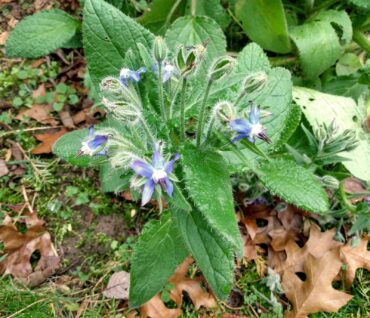
Bittercress
Bittercress, commonly found in lawns, grows in a cluster or clump with shoots topped by white flowers. “This plant has a pleasant flavor similar to fresh micro greens,” writes freelance journalist and backyard gardener Steph Coelho, author of “28 Edible Weeds You Can Find in Your Own Backyard.”
All above-ground parts are edible; the leaves aren’t bitter, but the flowers can be, Coelho writes. “It’s best eaten fresh,” according to Coehlo.
Borage
This droopy plant has small, purple-blue, star-shaped flowers that attract bees and butterflies. Borage is self-seeding, hardy and easy to grow.
Add the tender leaves to salads (brush to remove the hairs). Boil in a saucepan, add a few drops of olive oil, and stir-fry with a few cloves of garlic. Or cut up the stem and leaves and boil in a pot with other vegetables for soup. Add dumplings.
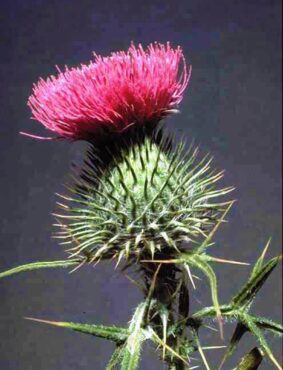
Bull Thistle
Wear gloves when harvesting this spiky plant. Eat the root or stem baked or boiled, Coelho recommends. “You can also eat young leaves raw. Flowers can be roasted when they are young, and you can also roast the seeds,” Coelho writes.
Burdock
Burdock is described by horticultural sites as a “stout handsome plant, with large, wavy leaves and round heads of purple flowers,” and less positively as “a stout, common weed with annoying burrs that stick to animal fur and clothing.” It’s both. It’s also edible and packed with antioxidants and tastes like artichoke. Peel and boil the stems; you can also eat the immature flowers or young leaves raw.
Chickweed
Chickweed grows close to the ground — look for a fuzzy ground cover with small, white flowers and oval-shaped leaves growing in opposites.
Wendy Tweten of Kingston, a frequent contributor to WestSound Magazine who studied horticulture and nursery management at South Seattle College, snacks on chickweed when she’s in her garden. “I also put it in salads. It has a ‘spring’ kind of taste, just like eating a nice lettuce,” she says. “I also like lamb’s quarters. And nettles are wonderful.”
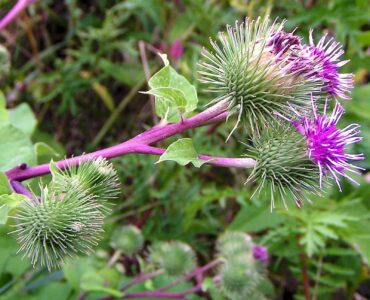
Chicory
This scraggly, stemmy plant has tiny, pretty blue flowers — also known as blue daisies — and likes well-drained soil with plenty of organic matter. The leaves and roots have a woody flavor with a spicy twist. The flower is bitter. The leaves are ideal for salads; the roots can be baked, ground and used as a coffee substitute and food additive.
Dandelion
The roots, leaves and flowers of this prolific plant are edible and incredibly nutritious. Depending on the part of the plant you eat, the flavor can be earthy or nutty. “Cook it up like spinach or eat it raw,” Coelho writes. Cook harvests the buds before they flower and uses them in omelets. He also makes dandelion jelly (see recipes).
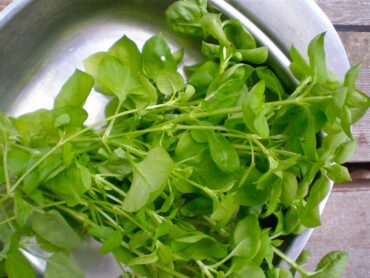
Dockweed
This broadleaf perennial is common in poorly maintained turf and grassland pastures. It has a deep, branched taproot that is difficult to remove entirely without disrupting the surrounding grass, and the leaves readily tear off when pulled. Cook uses dockweed leaves as a wrapper for dolmas (see recipes).
Garlic Mustard
Early European settlers brought garlic mustard to this continent for use as a seasoning, but the plant is a highly invasive species. First-year plants are rosettes of green leaves close to the ground; by second year, they reach as tall as 39 inches, with stalked leaves and small clusters of white-petaled flowers.
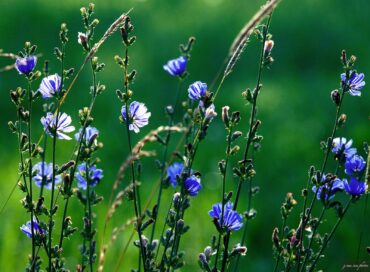
Garlic mustard is classified as a Class A weed and eradication is required by state law. So, by all means, pull it. But before you toss it into the yard waste bin, consider this: You can eat the leaves, flowers, roots and seeds (but don’t eat raw). Chop for flavoring in salads and sauces such as pesto. The leaves are best when young and taste of garlic and mustard. The flowers and roots have notes of horseradish and garlic.
Horsetail
This reed-like plant typically has hollow-fluted stems and feathery branches. The first young shoots should be pinched off close to the ground and then cleaned of the brown papery sheath that surrounds each node. The tender growth between the nodes is traditionally eaten fresh-dipped in olive oil, but it may also be cut up and added to soups or sautés.
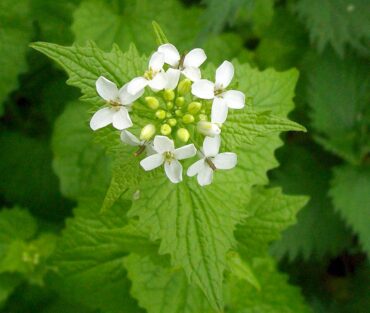
The feathery branches can be made into a tea. Put 3-4 teaspoons of fresh or dried horsetail in a teapot, pour 8 ounces of boiling water into it, cover the teapot, steep for five minutes, strain the mixture and add honey or sugar to enhance the taste. “It resembles the flavor of black tea,” Coelho writes.
Knotweed
This plant is labeled a Class B weed on the state’s Noxious Weed List, which means prevention of its spread is “a high priority.” It grows in large, dense thickets, can reach 4-13 feet tall, and has bamboo-like, green-reddish canes and branched clusters of small white to pink flowers. They reproduce via extensive roots and rhizomes. Pull it — and take it to the kitchen. The hollow green stems are tart, crunchy and juicy; can be eaten raw or cooked; and taste like rhubarb.
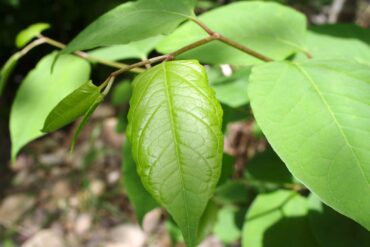
Lady’s Thumb
Look for small, densely crowded flowers on the ends of stems and branches; narrowly elliptic leaves, usually with a reddish or purplish blotch near the middle; a leaf that is slightly rough with tiny bumps; and erect stems, 8 to 40 inches high, that are green or reddish in color.
The leaves, shoots, flowers and seeds are edible and have a peppery flavor. The raw leaves can be used as a lettuce substitute; raw leaves and flowers can be dried and brewed into a tea. Sautée leaves and chopped stem parts and use them in stir fry. Seeds can be eaten raw, roasted, cooked or sautéed.
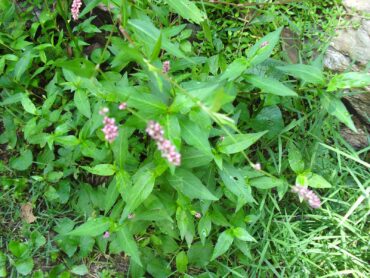
Lamb’s Quarters
This hardy plant is common in gardens and disturbed soils. The leaves, shoots and flowers are edible; cooking will remove the oxalic acid, which will otherwise give it a sour taste. Cook by steaming and add to salads, sautés, smoothies and soups.
Mallow
This low-growing plant — look for long, geranium-like leaves sprouting from a central point — is related to hibiscus and okra. Eat the leaves and flowers raw or cooked. “The fruit tastes a bit like capers and the leaves are mild,” according to Coelho. “They will take on the flavor of the things you cook them with.”
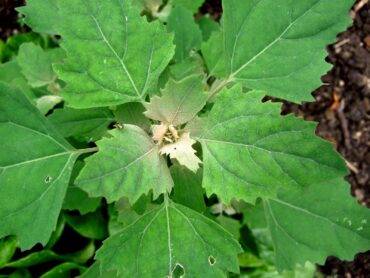
Mullein
This plant grows freely in barren soil. It consists of a grayish mound of large, fuzzy leaves in its first year, and in its second year sends up a 6-foot stalk bearing yellow flowers.
You can eat the leaves and flowers raw, but they’re best turned into a tea. Pour 1 cup of boiling water over 1-2 teaspoons of dried mullein flowers and leaves. Cover and steep for 10-15 minutes. Pour the liquid through a fine cloth or a coffee filter to strain out the plant fuzz. Sweeten with honey, if desired.
Onion Weed
This plant lives up to its name — it smells and tastes like an onion. Look for a delicate, thin-stemmed plant with drooping white flowers that grows in the shade. “The leaves are delicious raw,” Coelho writes.
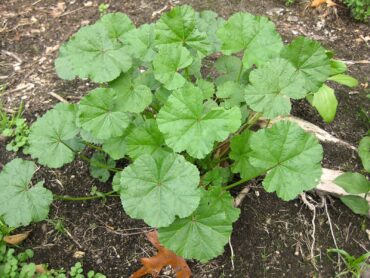
Pigweed
Also known as amaranth, this plant has a mild lemon taste with salty notes. Look for a tall stem topped with small, clustered flower spikes. Young leaves are best, but you can cook or dry the older leaves as well. Roast the seeds for a treat.
Pineapple Weed
This plant tastes like a mild pineapple. It resembles chamomile; crush the leaves between your fingers. The leaves and flowers are edible raw and can be used to make a tasty tea. Cook dries the flower heads in the sun for an hour. He then takes 2 teaspoons’ worth and steeps them in 2 cups of hot water for 10 minutes. Finally, he adds honey and ice — and sits back in a rocking chair on the front porch to enjoy.
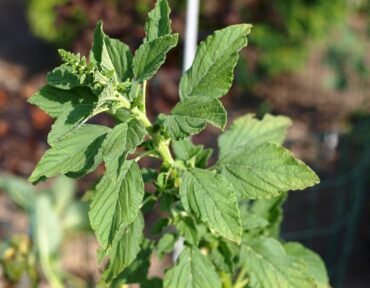
Purslane
This plant looks like a miniature succulent. Cook uses purslane in salads.
Pick a bunch of purslane, stem it (making sure to keep many of the leaf clusters intact) and toss it with a chopped sweet onion such as a Walla Walla and a large ripe heirloom tomato, he says. Season with salt and pepper and allow the tomato juice to form the dressing; squeeze a chunk of tomato into the salad if necessary to get the juices flowing.
“You’ll be amazed by the results,” Cook says. “Purslane has a crunchy texture and a complex flavor that marries perfectly with the acidic tomato juice and sweetness of the onion.”
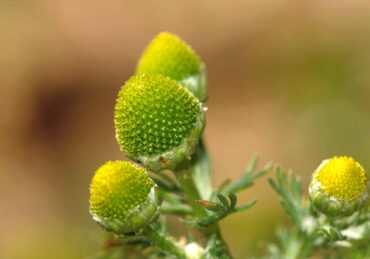
Sheep Sorrel
This plant grows in spring with a clump of arrow-shaped leaves and a red rosette. The leaves are delicious chopped in salads, the seeds are good raw or cooked, and ground-up dried leaves can be used to make a flour for baking or for thickening soups. Expect a tangy, citrus flavor with a slightly bitter edge.
Shepherd’s Purse
This plant has hairy, lobed leaves and distinctive purse-shaped pods. It’s easiest to spot when it’s seeding. Eat it when the leaves are young, either raw or cooked; expect a mild flavor of radish or mustard greens. Use shepherd’s purse as a cabbage substitute.
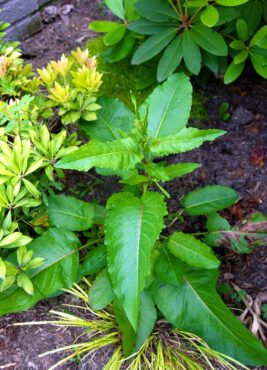
Stinging Nettle
Tweten took Cook’s class on harvesting and preparing stinging nettle. It can be cooked in soups or as a side dish, she says, and tastes like spinach. The leaves, roots and stems are edible; wear gloves when harvesting.
Violets
This pretty plant has a mild, sweet pea flavor. The flowers can be eaten raw and add a bit of color to a salad. You can also candy them or turn them into jelly. The leaves can be eaten raw.
Watercress
Watercress is related to mustard, radish and wasabi, all noteworthy for their piquant flavors. The new tips of watercress leaves can be eaten raw or cooked. Watercress is “peppery, like arugula, and crunchy,” Cook says.
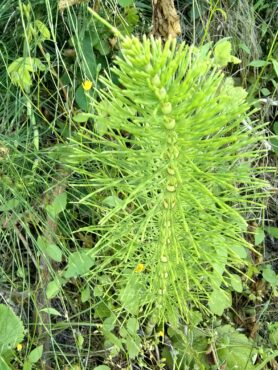
Wood Sorrel
This plant often gets mistaken for clover. Here’s how to tell the difference: One, wood sorrel has heart-shaped leaves; the leaves of clovers are rounded. Two, sorrel has tiny, yellow flowers with five petals; clovers produce large flower heads loaded with flowers that somewhat resemble those of peas. Three, wood sorrel leaves and flowers fold up and close in the evening, then reopen in the morning. Four, clovers are edible, too, but their leaves can be stringy and fibrous if eaten raw.
“It’s a native plant and it’s delicious,” Cook says of wood sorrel. The immature seed pods, leaves and flowers can be used in soups, salads or sauces.
Yellow Dock
Also known as curly leaf dock, this plant has distinctive narrow leaves with curly edges; the stems turn brown in the late summer. Oxalic acid gives the plant a lemon flavor.
“Consume this raw when the leaves are young,” Coelho writes. “Once the leaves get older, they should be cooked. Don’t eat the leaves after they have turned brown. You can peel and eat the stems and cook the seeds, as well.”
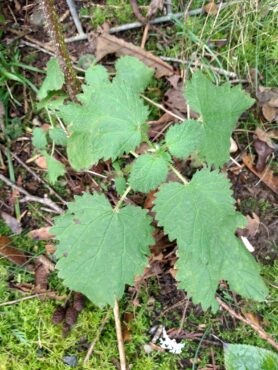
Stinging Nettle Soup
Courtesy Langdon Cook
Ingredients:
- 4 tablespoons butter
- 1 medium Walla Walla sweet or yellow onion, diced
- 2 cloves garlic, minced
- 3 medium potatoes, peeled and cut up
- 2 cups chicken stock
- 2 cups water
- 1 large bunch stinging nettles
- Nutmeg or other spices
- Salt and pepper to taste
- Heavy cream
Instructions:
Sauté the onions in butter until near caramelized. Add the garlic and potatoes and cook over medium heat several minutes. Spice to taste. Add stock and water and simmer until potatoes are tender. Add nettles, stir and cover. Cook 10 minutes on a low boil. Puree in blender, food mill or processor, then return to pot. Add stock or cream if necessary; check seasoning. Serve with heavy cream.
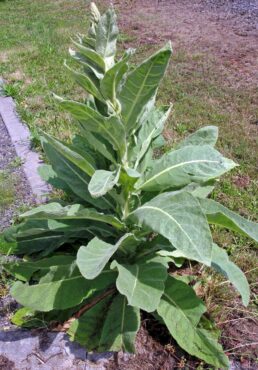
The finished soup will be sweetened by the caramelized onion and thickened by the potato, but the real treat is the vernal shot of nettle. Reminiscent of spinach though wilder, nettles have a fresh, peppery zing that evokes the moist woodlands of their home. Later in the spring, when the days are warmer, you can omit the potatoes/cream and skip the puree step to simply enjoy a refreshing soup of chopped nettles. There are few foods better for you — or tastier.
Dockweed Dolmas
Courtesy Langdon Cook
Ingredients:
- 1 dozen large dock leaves (more on those later)
- 2-3 tablespoons olive oil, plus extra for drizzling
- 1/2 yellow onion, diced
- 2-3 cloves garlic, diced
- 2 cups cooked rice
- 1 large lemon, juiced
- 1 large handful mint & parsley, chopped
- Salt and pepper
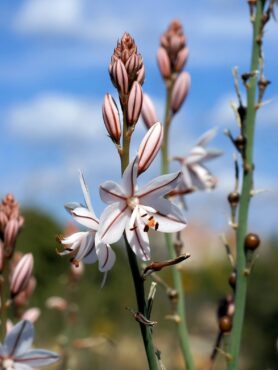
Instructions:
Pick several large dock leaves in front yard. Put pot of water on the boil.
Dice leftover onion half. Chop two cloves of garlic.
Blanche five dock leaves, one at a time, for 30 seconds each; remove to paper towels, careful not to tear leaves.
Add a couple tablespoons of olive oil to skillet over medium heat. Sweat onions and garlic. Add two cups of leftover white rice to skillet. Stir together, then kill heat.
Squeeze large lemon, about 1/4 cup juice, and add to skillet. Chop parsley and mint together and add to skillet. Season with salt and pepper, plus more olive oil if necessary. Stir well.
Begin wrapping dock leaves with rice mixture. Use burrito technique, folding over two spoonfuls of rice and tucking corners before rolling up.
Arrange dolmas on plate. Drizzle with olive oil and a sprinkling of sea salt.
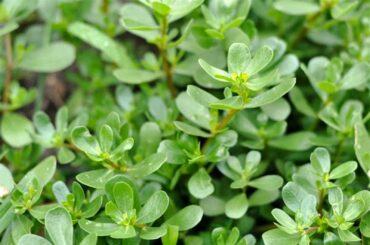
Salmon with Wild Sorrel Sauce
Courtesy Langdon Cook
Ingredients:
- 2 half-pound wild salmon fillets, skinless
- 2 tablespoons cold unsalted butter, divided
- 1 small shallot, diced
- 1/4 cup champagne vinegar
- 1/8 cup heavy cream
- Small pinch cayenne pepper
- 1/4 cup packed wood-sorrel leaves, de-stemmed
- Salt and pepper
- Olive oil
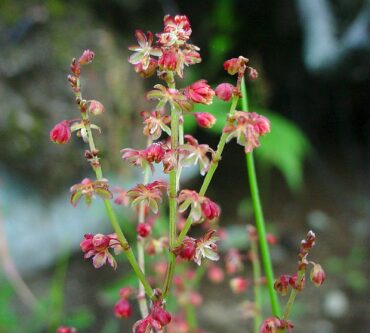
Instructions:
Brush the salmon fillets with olive oil, season with salt and pepper, and place on foil on a baking sheet. Put fillets in preheated oven on broil, 4 to 6 inches from flame, just before making sauce. Figure about 10 minutes per inch of thickness.
Over moderate heat, melt 1 tablespoon of butter in a heavy, nonreactive saucepan. Add diced shallot and cook, stirring, until starting to brown, 1 or 2 minutes.
Add champagne vinegar and reduce to a tablespoon before adding heavy cream. Bring barely to boil, reduce heat and stir in second tablespoon of butter. The sauce should be thick. Season with salt and a pinch of cayenne pepper.
Quickly shred wood-sorrel leaves and mix into sauce. The leaves will lose their vibrant green color but their distinct lemony flavor will remain. Pour over salmon fillets and serve immediately. Makes 2 servings.
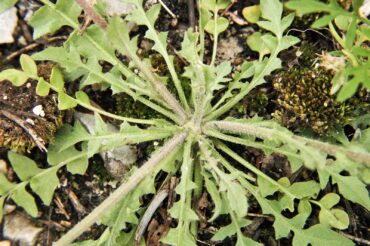
Dandelion Jelly
Courtesy Langdon Cook
Ingredients:
- 2 cups dandelion petals
- 2 cups water
- 1 cup sugar
- 2 teaspoons lemon juice
- 2-4 teaspoons pectin*
* Maybe more, maybe less.
Instructions:
Bring 2 cups water to boil and add dandelions. Boil 10 minutes over medium heat. Strain dandelions and return liquid to pot.
Add sugar, lemon and pectin, then bring to boil again before reducing heat to a simmer. Stir with wooden spoon until syrupy. This may take little time or lots of time, depending.
Pour into sterilized jars, seal and process in hot water bath for 10 minutes. Yields about a pint.
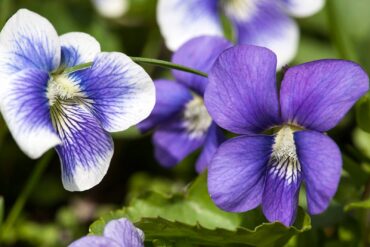
Tuna with Chickweed Chimichurri
Courtesy Langdon Cook
Ingredients:
Chimichurri
- 1 packed cup chickweed, chopped
- 4-5 cloves garlic, minced
- 2 tablespoons shallot, finely diced
- 3 tablespoons sweet red pepper, finely diced
- 1 tablespoon hot pepper, deseeded, finely diced
- 1/4 cup lemon juice
- 1/4 cup olive oil
- 1/2 tsp salt
Tuna and sushi rice
- 1 pound sushi-grade tuna, cut into small (1/2 inch) cubes
- 2 cups sushi rice
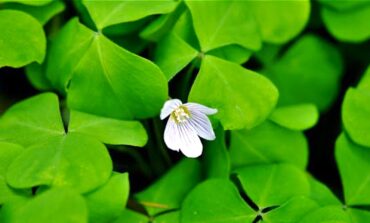
Rice vinegar to taste
Instructions:
Mix chimichurri ingredients together in a bowl and refrigerate for an hour or so. Meanwhile make seasoned (i.e. add rice vinegar) sushi rice and cut up a bunch of sushi-grade tuna. Serve a dollop of the raw tuna over a bowl of rice; garnish with the chimichurri. The acidity of the chimichurri immediately begins to act on the tuna, changing the flavor in subtle ways as you eat. Makes 4 servings.




